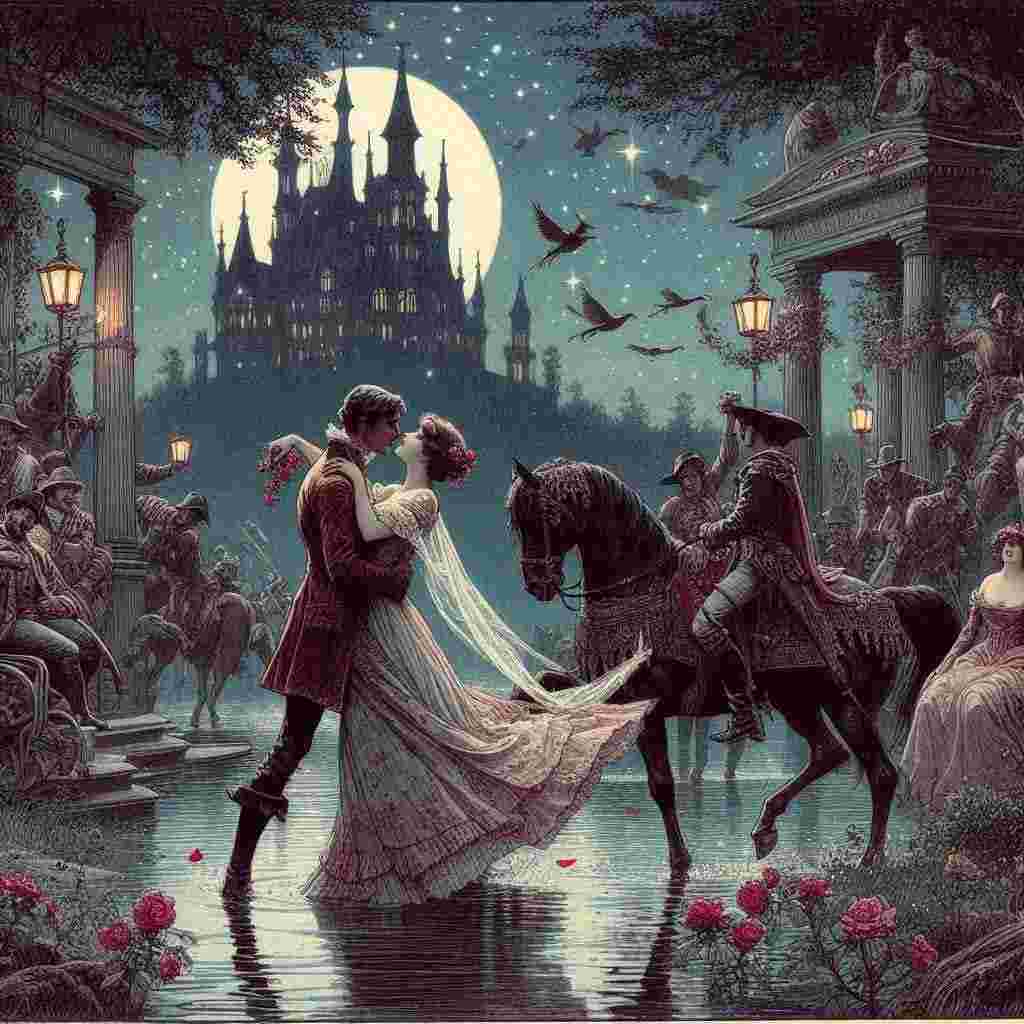4 Poems by Robert Louis Stevenson
1850 - 1894
Robert Louis Stevenson Biography
Robert Louis Stevenson, born on November 13, 1850, in Edinburgh, Scotland, was a prolific and versatile writer whose work has left an indelible mark on English literature. Best known for his adventure novels and children's literature, Stevenson was also an accomplished essayist, poet, and travel writer whose life was as colorful and dramatic as many of his fictional creations.
Born into a family of lighthouse engineers, young Robert was expected to follow in the family tradition. However, from an early age, he showed a predilection for storytelling and writing. His childhood was marked by frequent illness, particularly respiratory problems that would plague him throughout his life. These long periods of convalescence allowed him ample time for reading and fostered his rich imagination.
Stevenson's formal education was irregular due to his health issues, but he was a voracious reader and showed early promise as a writer. He entered the University of Edinburgh in 1867 to study engineering, following family tradition, but his heart wasn't in it. In 1871, he informed his father of his desire to become a writer, a decision that initially caused tension in the family. As a compromise, he agreed to study law, graduating in 1875, though he never practiced.
During his university years and immediately after, Stevenson began to publish essays and travel pieces. His first book, "An Inland Voyage" (1878), recounted a canoe trip through Belgium and France. This was followed by "Travels with a Donkey in the Cévennes" (1879), establishing his reputation as a travel writer with a keen eye for detail and a gift for vivid description.
Stevenson's personal life took a dramatic turn when he met Fanny Van de Grift Osbourne, an American woman eleven years his senior, in France in 1876. Despite her being married with two children, they fell in love. When Fanny returned to California in 1878, Stevenson followed her the next year, a journey he would later recount in "The Amateur Emigrant" (1895). They married in 1880 after Fanny's divorce, beginning a partnership that would be crucial to Stevenson's life and work.
The 1880s saw Stevenson's emergence as a major literary figure. "Treasure Island," serialized in 1881-82 and published as a book in 1883, was his first great success. This swashbuckling adventure story, with its unforgettable characters like Long John Silver, established many of the tropes of pirate fiction and remains a classic of children's literature.
"Strange Case of Dr Jekyll and Mr Hyde," published in 1886, marked another high point in Stevenson's career. This novella, written in a white heat over three days (according to Stevenson's account), explores themes of good and evil, the duality of human nature, and the consequences of repression. Its impact on popular culture has been immense, with the characters of Jekyll and Hyde becoming bywords for split personality.
Other notable works from this period include "Kidnapped" (1886), a historical novel set in 18th-century Scotland, and "The Master of Ballantrae" (1889), a darker work that showcases Stevenson's growing sophistication as a writer. He also produced collections of short stories, such as "New Arabian Nights" (1882) and "The Merry Men and Other Tales and Fables" (1887), which demonstrate his versatility in different narrative forms.
Throughout his life, Stevenson was also a prolific and accomplished poet. His collection "A Child's Garden of Verses" (1885) remains popular, with its whimsical, nostalgic view of childhood. He also wrote more serious, adult poetry, collected in volumes such as "Underwoods" (1887) and "Ballads" (1890).
Stevenson's lifelong battle with ill health led him to search constantly for a climate that would ease his respiratory problems. In 1888, he embarked on a voyage to the South Seas, initially planning to stay for a few months. Instead, he fell in love with the Pacific islands and spent the last six years of his life there, finally settling in Samoa.
This period saw a new phase in Stevenson's writing. Works like "In the South Seas" (1896) and "A Footnote to History" (1892) reflect his deep engagement with Polynesian culture and politics. He became an advocate for the Samoan people, involving himself in local affairs and earning the nickname "Tusitala" (Teller of Tales).
Stevenson died suddenly on December 3, 1894, at the age of 44, leaving his final novel, "Weir of Hermiston," unfinished. His death was mourned both in Samoa, where he was buried on Mount Vaea, and around the world where his books had brought him fame.
Stevenson's literary legacy is complex and multifaceted. While he was immensely popular in his lifetime, his reputation suffered somewhat in the early 20th century, with some critics dismissing him as merely a writer of children's books and adventure stories. However, later reassessments have recognized the depth and complexity of his work. His essays, in particular, have been praised for their style and insight.
Stevenson's influence on literature has been profound. His adventure novels helped define the genre, while "Dr Jekyll and Mr Hyde" pioneered psychological horror. His travel writing inspired generations of wanderers, and his children's poetry continues to delight young readers.
In literary criticism, Stevenson's work has been analyzed from various perspectives. His use of doubling and duality, evident in works like "Dr Jekyll and Mr Hyde" and "The Master of Ballantrae," has been a rich source of psychoanalytic interpretation. His engagement with Scottish history and culture in novels like "Kidnapped" has been examined in the context of postcolonial studies.
Robert Louis Stevenson's life and work embody many of the tensions of the late Victorian era: between civilization and savagery, duty and desire, the rational and the irrational. His writing, with its blend of romance and realism, its exploration of moral complexity, and its vivid evocation of place, continues to captivate readers and scholars alike. Whether writing for children or adults, whether crafting adventure tales or probing psychological depths, Stevenson displayed a mastery of language and narrative that secures his place as one of the great writers of the English language.
This text was generated by AI and is for reference only. Learn more
Username Information
No username is open
Unique usernames are free to use, but donations are always appreciated.
Quick Links
© 2024-2025 R.I.Chalmers (V2Melody).

All music on this site by R.I.Chalmers (V2Melody) is licensed under a Creative Commons Attribution-NonCommercial 4.0 International License.
Attribution Requirement:
When using this music, you must give appropriate credit by including the following statement (or equivalent) wherever the music is used or credited:
“Music by R.I.Chalmers (V2Melody) – https://v2melody.com”
Support My Work:
If you enjoy this music and would like to support future creations, donations are always welcome but never required.
Donate




